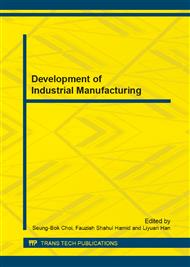p.607
p.611
p.616
p.621
p.625
p.629
p.633
p.639
p.642
Energy-Saving Analysis of Reversible Ventilation System
Abstract:
A new IAQ improved ventilation system-reversible ventilation system was designed. This system's working principle was introduced. For analyzing the superiority of reversible ventilation system, the conceptions of effective fresh air ratio and minimum effective fresh air ratio were described. The formula of effective fresh air ratio was deduced. The formula can be used to analyze the different air outputs of reversible ventilation system and conventional general ventilation system, in rooms with the same degree of fresh air. It can be taken as the guide for design and actual applications of reversible ventilation system.
Info:
Periodical:
Pages:
625-628
Citation:
Online since:
February 2014
Authors:
Price:
Сopyright:
© 2014 Trans Tech Publications Ltd. All Rights Reserved
Share:
Citation:


